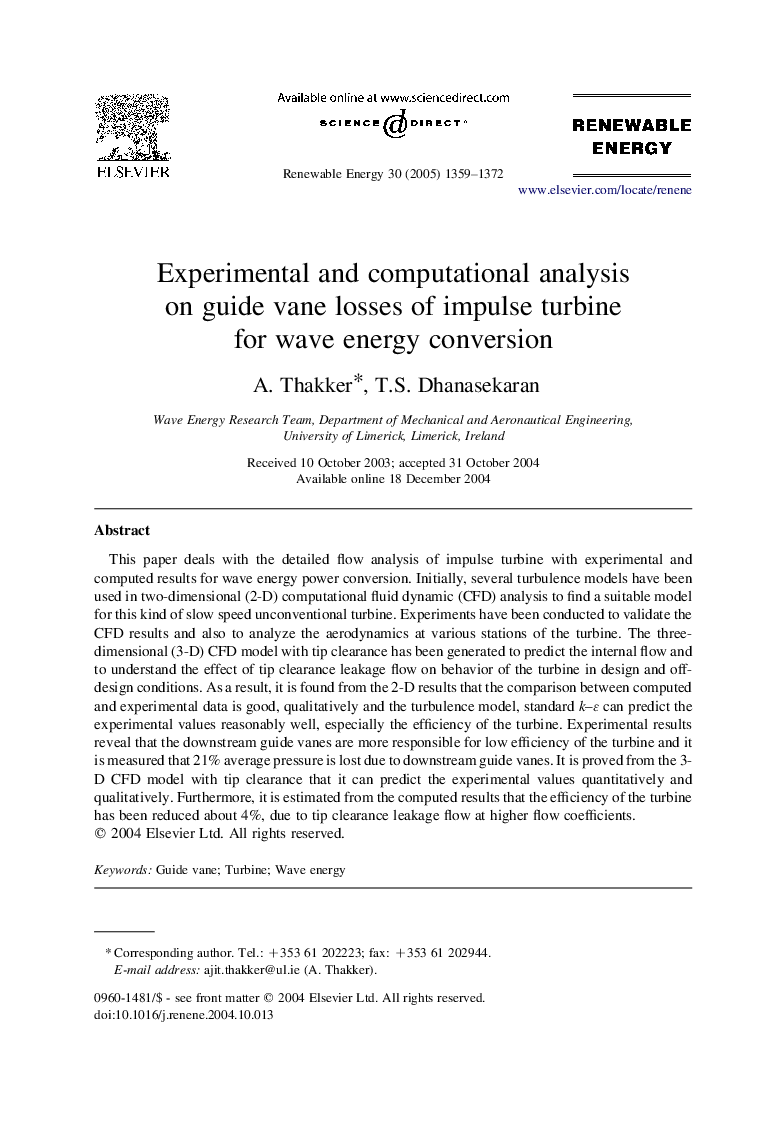| Article ID | Journal | Published Year | Pages | File Type |
|---|---|---|---|---|
| 10294357 | Renewable Energy | 2005 | 14 Pages |
Abstract
This paper deals with the detailed flow analysis of impulse turbine with experimental and computed results for wave energy power conversion. Initially, several turbulence models have been used in two-dimensional (2-D) computational fluid dynamic (CFD) analysis to find a suitable model for this kind of slow speed unconventional turbine. Experiments have been conducted to validate the CFD results and also to analyze the aerodynamics at various stations of the turbine. The three-dimensional (3-D) CFD model with tip clearance has been generated to predict the internal flow and to understand the effect of tip clearance leakage flow on behavior of the turbine in design and off-design conditions. As a result, it is found from the 2-D results that the comparison between computed and experimental data is good, qualitatively and the turbulence model, standard k-ε can predict the experimental values reasonably well, especially the efficiency of the turbine. Experimental results reveal that the downstream guide vanes are more responsible for low efficiency of the turbine and it is measured that 21% average pressure is lost due to downstream guide vanes. It is proved from the 3-D CFD model with tip clearance that it can predict the experimental values quantitatively and qualitatively. Furthermore, it is estimated from the computed results that the efficiency of the turbine has been reduced about 4%, due to tip clearance leakage flow at higher flow coefficients.
Keywords
Related Topics
Physical Sciences and Engineering
Energy
Renewable Energy, Sustainability and the Environment
Authors
A. Thakker, T.S. Dhanasekaran,
